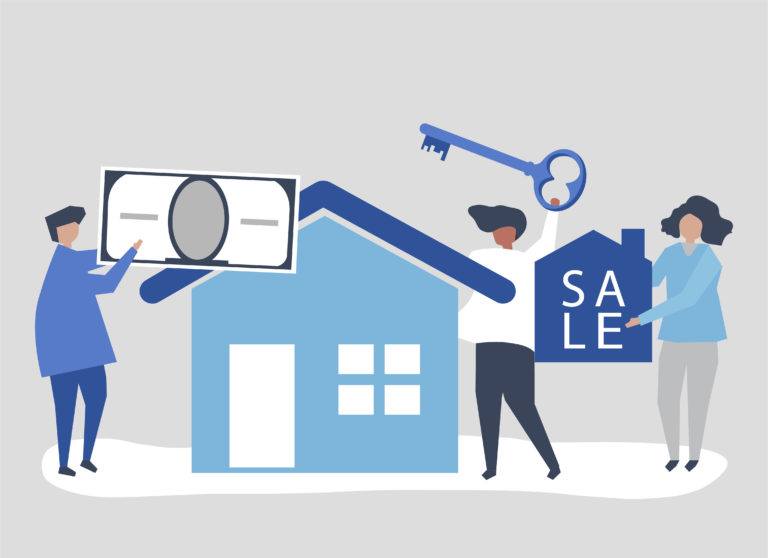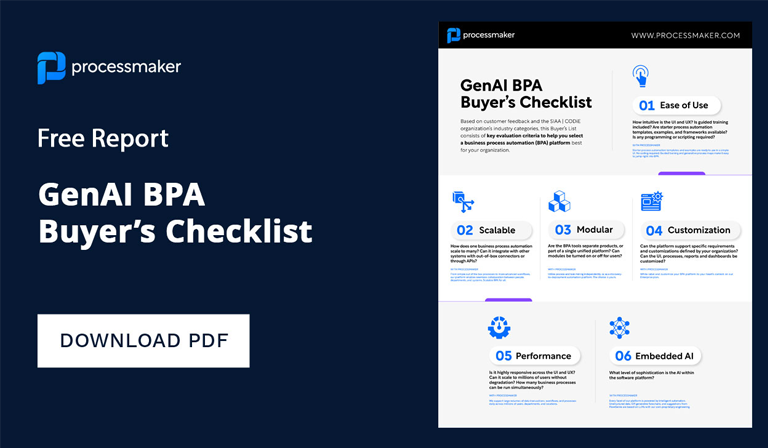More so than organizations in other industries, mortgage lending institutions continue to rely on antiquated business processes. These include complex legacy systems and fragmented databases that result in informational silos. A heavy reliance on human labor for manual tasks like data entry drives up costs, results in costly errors, and eats away at valuable time that employees could devote to improving the customer experience.
In addition to inefficiencies in their processes, mortgage lenders are also facing challenges like increased competition and compliance costs. Increased competition has increased the rate of innovation while also reducing mortgage lending profitability. Customers expect excellent customer service and speedy application decisions that border on real-time. A reduction of mortgage lending fees has created a pressing need for lenders to reduce loan processing costs.
Now more than ever, mortgage lenders must begin exploring and implementing innovative technological solutions like automation to remain competitive and ensure their long-term survival. In this blog post, we explore 4 different mortgage lending automation use cases to illustrate the potential uses of automation solutions in lending.
3rd party data push and pull services most common use case for mortgage lending automation
Traditional mortgage lending processes require employees to obtain, verify, and order information from third parties that is relevant to a borrower’s loan application. These include things like employment and asset verifications, credit reports, appraisals, and tax returns. Employees typically submit manual order forms to each vendor. They are often required to follow up to check on the status. Once received, the information must be manually reviewed and manually entered in their systems.
And then there is the issue of payment and reconciliation. Many lenders manually pay each vendor invoice. Following payment, they are forced to manually reconcile accounts. Not only are these processes time-consuming but there is the very real possibility of human error.
With mortgage lending automation solutions like intelligent process automation (IPA) banks can streamline the process of ordering third-party services. Lenders can set predefined business rules that automatically orders the relevant services. The mortgage lending automation solution also receives, reads, and enters the information from the third-party’s report into the designated software system. These solutions also automate the payment and reconciliation process, as well as perform compliance functions like ensuring that invoices satisfy RESPA disclosure requirements.
Enhancing mortgage lending with Open APIs
An API, or application programming interface, is an interface that allows applications or programs to communicate without human intervention. APIs can be used both internally and externally and have potentially unlimited uses. Lenders that use APIs to their full advantage can build on existing platforms to create new solutions without switching or upgrading their current platforms. Creating a composable API architecture is an innovative way to improve flexibility, accelerate implementation efforts and offer a more seamless and competitive experience for customers and employees.
A lender could utilize an automation solution like intelligent business process management (iBPM) software to extract, validate, and route data to the correct systems. BPM solutions offer low-code functionality making it easy for mortgage lenders to integrate their systems and to implement automation into any of their processes. In addition, BPM software ensures that data is stored securely.
Leveraging RPA bots to assist call center operators with case management
A Juniper Research study predicts that chatbots in banking will reach an estimate of $7.3 billion in cost savings globally by 2023.
Many of us are familiar with consumer-facing chatbots. These are the occasionally annoying popups that we encounter when visiting webpages. Organizations use them to provide 24/7 support and customer service and to capture leads, among other functions. Yet RPA bots are also incredibly useful and efficient tools that organizations use to simplify time-consuming and repetitive processes.
Some of the mortgage lending tasks that RPA bots assist with include sending emails, transferring information between systems, and opening and closing applications. Call centers still serve important functions in the mortgage application process. Agents field many different questions and concerns from potential borrowers. This requires them to perform a variety of manual and inefficient tasks.
With RPA bots, agents can easily push and pull borrower data with little manual intervention. This saves agents time, allows lenders to provide superior customer service, and reduces costs by helping agents to serve more customers. RPA bots are easy for lenders to install. They offer low-coding implementation and work with existing banking applications.
Post-closing quality control reviews
The post-closing process is performed after all documents have been signed and a loan has been funded. Strict lending regulations and guidelines require lenders to audit closing documentation to ensure that they comply with underwriting processing rules. Post-closing manual loan review processes take a significant amount of time and expose mortgage lenders to unnecessary compliance risks.
While post-closing review procedures vary by lender, at a minimum the process requires that lenders review:
- Underwriting documents for completion and accuracy;
- Loan application for completion and accuracy;
- Borrower eligibility and support for the underwriting decision;
- The appraisal;
- Other output from third-party tools;
- Compliance with mortgage insurer requirements;
- Documentation showing sufficient mortgage insurance coverage;
- Legal documentation like the sales contract; and
- Compliance with local, state, and federal regulations.
Loan quality reviews are generally completed within 60 days of file selection. Quality control reports have traditionally been completed following review of all files selected within a specific month. With mortgage lending automation software, lenders do not have to wait until all reviews are completed. They can report findings in real-time following the completion of each review. Automated solutions review and extract data from relevant documentation, and flag potential issues. Employees can then perform root-cause analyses to identify and correct the defect.
Mortgage lending automation solutions significantly reduce lenders’ post-closing review and compliance costs.
Identifying processes ideal for mortgage lending automation
While we explored 4 potential mortgage lending automation use cases above, many mortgage lending processes are ideal for automation. For example, artificial intelligence will revolutionize fair lending. Identifying these processes is not always easy, particularly for those new to automation. Yet there are some core characteristics of lending processes that stakeholders should look for when identifying candidates. These include:
- Highly repeatable processes with low levels of complexity. These are processes that are easy to perform, occur frequently, and utilize a significant portion of employees’ time.
- Swivel chair processes. Swivel chair issues arise when stakeholders must manually enter the same data in a variety of systems due to a lack of integration among applications.
- High quality required. Mortgage lending institutions face extensive regulations and compliance issues. For these reasons, many processes require organizations to achieve quality and scalability.
- Rules-based processes. Automation is a great fit for processes that adhere to a set of predefined and structured rules.
After identifying process candidates, stakeholders must determine the potential ROI. They should prioritize those processes that offer a high upside and can deliver an immediate return. This way lenders can parlay the returns into automating other lending processes.





